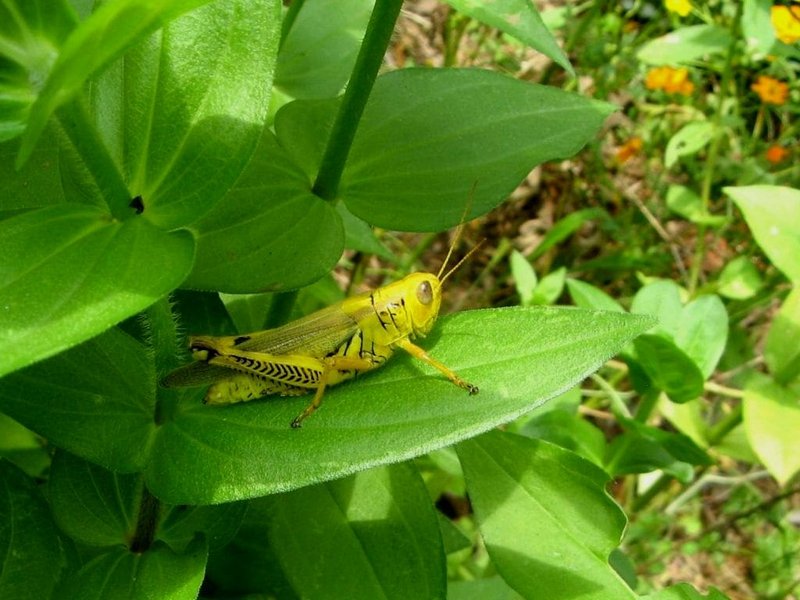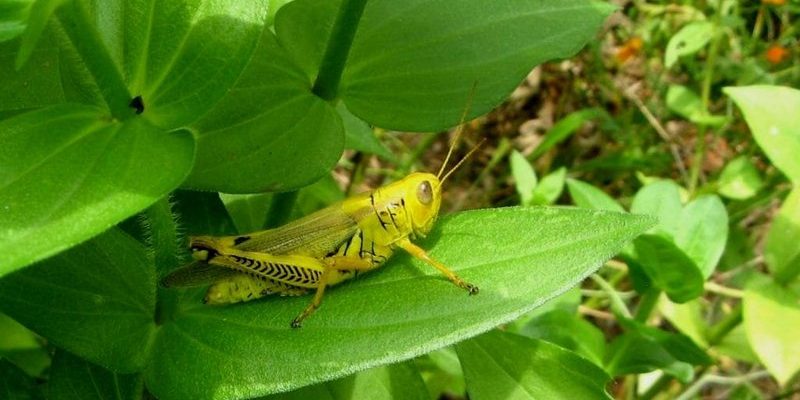
Grasshoppers are known for their hopping abilities, but they also have some impressive survival skills. Imagine trying to find food and avoid predators while also adapting to changing weather conditions. It’s a bit like a game of hide-and-seek, but way more complex. So, grab your favorite drink, and let’s hop into the world of grasshoppers, exploring where they call home and how they cleverly adapt to their surroundings.
Grasshopper Habitats: Where They Live
When you think of grasshoppers, the first picture that comes to mind might be sunny meadows or lush fields. Grasshoppers actually inhabit a variety of environments, ranging from grasslands and woodlands to deserts. The most common habitats include:
- Fields and Meadows: These are the bustling hotspots for grasshoppers, where they can find plenty of plants to munch on.
- Forests: Some grasshopper species prefer the shaded areas of forests, hiding among the foliage.
- Deserts: Believe it or not, certain species have adapted to survive in arid conditions, focusing on moisture-retaining plants.
Each habitat offers different types of vegetation for grasshoppers to feed on. The food source is crucial; it’s like finding a buffet that suits their taste buds! Grasshoppers are primarily herbivores, munching on leaves, stems, and flowers. You might be wondering how they find food in such diverse settings. Well, their keen sense of smell helps them detect food, which is pretty neat!
Adaptability: Nature’s Survival Strategy
Grasshoppers are masters of adaptation. You might think of adaptation as nature’s way of tweaking the rules—making changes to survive. For instance, in a drier environment, grasshoppers have developed thicker outer layers to help retain moisture. This is crucial, especially in places where water is scarce. It’s like wearing a moisture-wicking shirt on a hot day, helping them stay cool and hydrated.
Moreover, grasshoppers can change their color based on the environment. In areas with darker soil, they may develop darker hues to blend in better, while those in greener fields might sport bright greens. This natural ability to camouflage helps protect them from predators like birds and reptiles. Honestly, it’s like wearing the perfect outfit for a party—improving their chances of blending in with the crowd!
Behavioral Adaptations for Survival
Beyond physical changes, grasshoppers also exhibit fascinating behavioral adaptations. For example, they are mostly active during the daytime, known as diurnal behavior. This means they take advantage of the warmth and sunlight, which also helps them find food. To escape predators, grasshoppers often jump away quickly. You might say they have spring-loaded legs, ready to launch them to safety!
Another interesting aspect is their social behavior. Some species tend to gather in groups, particularly during warm months, which can help them find mates and protect each other from danger. It’s like having a built-in support group. When one grasshopper jumps, the others often follow, creating a mesmerizing dance that can confuse predators hunting them.
The Role of Climate in Grasshopper Habitats
Climate change significantly impacts where grasshoppers can live. As temperatures rise and weather patterns shift, these insects have to move or adapt. The availability of food changes with the climate, which can lead to population fluctuations. You might think of them like tiny barometers of environmental health—when grasshopper numbers drop, it often signals a change in the ecosystem.
For instance, warmer temperatures might lead certain species to migrate to higher altitudes or latitudes where it’s cooler. This movement is their way of saying, “Hey, time to find a new pad!” But here’s the catch: not all species can adapt quickly enough, which makes them vulnerable to extinction if conditions change too rapidly.
Grasshopper Impact on Ecosystems
Grasshoppers are significant players in their ecosystems. They don’t just munch on plants; their feeding habits can influence plant growth. By eating leaves and stem tips, they help keep those plants in check, allowing a diversity of other species to thrive. Think of them as nature’s landscapers, trimming the garden to encourage new growth.
Moreover, grasshoppers also serve as food for various predators—birds, frogs, and even certain mammals rely on them for sustenance. If grasshopper populations were to decline, it would create a ripple effect throughout the food chain. Suddenly, those birds might struggle to find enough food, leading to a host of problems for the wider ecosystem. It’s a delicate balance, and grasshoppers play a crucial role in keeping it steady.
In conclusion, the life of a grasshopper is a journey full of interesting twists and turns. From their habitat choices to their adaptations, these small creatures showcase nature’s brilliance. Grasshoppers remind us that every species, no matter how small, plays a vital role in the larger picture of life.
So next time you’re enjoying the sounds of summer, take a moment to appreciate the grasshoppers all around you. They’re not just jumping around aimlessly; they’re part of a rich, interconnected ecosystem, adapting and thriving through challenges. It’s a little reminder that survival is a team effort in nature, and every hop they take has a purpose.

